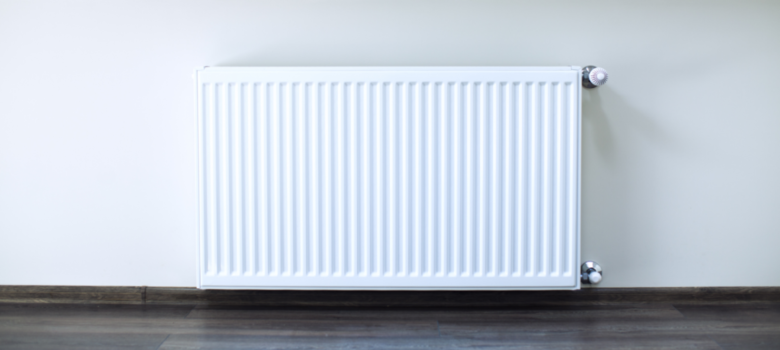
We get tons of questions from our customers regarding radiators: when to change them, when to flush them, how to bleed them and so forth – so here we have produced a one stop guide to radiators and all the important things you need to know.
Bleeding your radiators
What is it and why do you need to do it?
Bleeding is where you vent trapped air from the radiator, which can build up over time and prevent your radiators from working correctly. Small amounts of air enter the central heating system every time fresh mains water flows through the boiler/heating system. This air collects at the top of the radiators, preventing the top part of the radiator filling with warm water and therefore reducing its heating capability.
It is important to bleed your radiators on a regular basis, since releasing this trapped air can dramatically improve the efficiency of your central heating. It is a simple job that you can do yourself with a bit of knowhow, however if you have any problems or you are unsure how to proceed, it is worth getting a plumber to do this for you.
How do you know if your radiator needs bleeding?
The best way to check is to turn your heating on and wait for the radiators to warm up. If there are any cool spots, especially near the top of the radiator, you may need to bleed it. If the radiator doesn’t warm up at all, then potentially it is completely full of air and so this will need to be released before it can be used to heat rooms.
How do I bleed my radiator?
Firstly ensure your heating is off – you don’t want to burn yourself with hot water!
You will then need a radiator bleeding key, or a flat headed screwdriver for more modern systems. At the top of the radiator at one end you will find a valve where you can put the key or screwdriver. Make sure you have a cloth ready to catch any drips!

The last step after bleeding all your radiators with cold spots is to check the pressure of the system. If you have bled a lot of gas, the pressure in the system may be low and in this instance you will need to top it up using the ‘filling loop’, which is a little lever on your boiler.
The final check is to turn your heating back on and just confirm that the cold spots have disappeared.
You should also try balancing your radiators.
Flushing radiators
Flushing your radiators is a job carried out by professionals and involves completely cleaning them out and gets rid of any sludge that has built up over the years. It is definitely worth doing and you may find the improved warmth of your rooms means you won’t want to change your system after all.
It is a relatively more tricky procedure, and must be done by an expert. Typically this will cost a few hundred pounds. You should be aware that some older radiators could show up a leak and you’d a new radiator, but flushing really is worthwhile as your heating system should be a lot more efficient as a result.
It is also a good time to get a cleaning system like magnaclean (a magnetic filter), which helps to keep the radiators crud free in future, although this will usually be done when installing a new boiler anyway.
Old vs. new radiators
We often get asked when a customer is considering a new boiler – should we also change our radiators? There are several things to consider with this and it is not a straightforward yes or no answer, but some key things you should remember are:
- After flushing your old radiators when installing the new system, there is a small chance you will get leaks, so you should be aware that you may need to install replacement radiators at this point anyway.
- If your old radiators are quite small, they will need to be hotter to heat the room to your preferred temperature, which means the boiler is working harder. Larger radiators are more efficient as they can run at a lower temperature and still heat the room sufficiently.
- Some older radiators may not be able to handle the output from your new boiler, especially if you are getting a combi or a larger boiler than you had previously. Your installer should be able to help you with this.
- New radiators are often not included in any quote you get, so be aware that you are going to be paying more if you go for new ones!
How much do new radiators cost?
Typically a new radiator will cost less than £100 (this will depend on the size) and you will have to pay for the installation as well. But remember, it is important to get the right size for the room – don’t just assume that the radiators you have already are the right size and replace them with similar.
What type of radiators should I install?
Firstly you need to decide which type of radiator you are going for.
The single and double panel radiators (which can be seen below) are the older style – and nowadays if you go into a DIY store you are not going to be able to buy this type of radiator.

 It may well be worth replacing this type of radiator instead of going through the costly process of flushing it out and if you do decide to do this, you will probably get away with using a smaller convector radiator because the through out more heat.
It may well be worth replacing this type of radiator instead of going through the costly process of flushing it out and if you do decide to do this, you will probably get away with using a smaller convector radiator because the through out more heat.
There are three main types of convector radiator (which you can see below):
- Single Panel Convector radiators
- Double Panel Convertor radiators
- Double Panel Double Convector radiators


 The panel refers to the long metal tanks that run parallel to the wall – it is these that fill with the hot water from your central heating systems and emit heat around the room. The longer the panel, the larger the heat emitting surface area, so bigger radiators will emit more heat, but also remember that a double panel radiator will emit more heat than a single panel radiator of the same length.
The panel refers to the long metal tanks that run parallel to the wall – it is these that fill with the hot water from your central heating systems and emit heat around the room. The longer the panel, the larger the heat emitting surface area, so bigger radiators will emit more heat, but also remember that a double panel radiator will emit more heat than a single panel radiator of the same length.
The convector fins (the zig-zagging metal strips) are welded to the panels and these are used to increase the surface area of the radiator so it emits more heat in a room. As mentioned previously, if you are replacing an older radiator without the convector fins, it is possible to install a much smaller convector radiator that will produce the same amount of heat.
The final thing to consider when buying a new radiator is the style at the top. Round top radiators allow you to see the convector fins, while compact radiators have a grill across the top of the panels that obscures the view of the convector panels. The performance of the two types of panel is pretty much identical, so this comes down to the finish you prefer!
Before you guy out and buy the radiator, you need to calculate the heating requirements of the room to ensure you buy the correct radiator size.
Sizing your radiator
The heat requirement of individual rooms is absolutely key to choosing the correct size radiator. For example, If you have a huge room with lots of external solid brick wall (notoriously bad at retaining heat) and you have a small single panel convector radiator fitted, it is likely the room is going to still be very cold, so you are going to need to supplement the heat.
There are software tools available that let you work out the exact heat demand of the room in question. These take into account the wall type, insulation present, the floor type, size of the room, amount of external wall and the intended use for the room.
Once you have your heat demand – typically several kilowatts or more – you can then use an equation like the one below to determine the length of the radiator required (this is based on a 50cm high radiator:
Length = Heat Demand (Watts) / (X*62)
Where X is a factor (0.09 for single panel radiators with no convector, 0.13 for single panel convector, 0.19 for double panel convector and 0.24 for double panel double convectors).
This equates to a difference of around 50% between the single convectors and double convectors, so it really does make a big difference.
With modern boilers, it is always best to design for a slightly larger radiator than you think is necessary – apart from the initial extra cost, there are not really any additional costs further along the line, since you can use thermostatic radiator valves to control the temperature of the individual radiator.d
>>> Should I replace my conventional boiler with a combi? <<<
Where should my radiators go?
The British standard is to place radiators on external walls under windows where possible. The external wall is easier to mount and these are usually the coldest areas of the room, so it will help to offset that and create a more evenly warmed room. On the downside, curtains above the window may shield the radiator, and heat will be lost through the exterior walls and windows. Installing a radiator shelf above the radiator, and using reflective materials such as Radflek can really help reduce this heat loss. Even better, GreenAge readers can get an exclusive 20% discount using offer code TGA20.
You might also wish to install a radiator fan to ensure the hot air gets evenly dispersed through the room (meaning the heat is felt more effectively so you can turn down the heating).
Radiator cabinets and furniture
Although they may hide the radiator from view, radiator cabinets can seriously reduce the heat output of the radiator. If you are planning to hide the radiator away like this, you will have to get bigger radiators. Likewise, if you have furniture directly in front of your radiators, it will absorb the heat produced, therefore installing a radiator fan will help redirect the heat around the room helping it to warm up quicker.
Which radiators are most efficient and are radiator boosters worth it?
All radiators effectively have the same efficiency – they give off the heat depending on how hot the water is being pumped into them. As we have mentioned however, the more panels and convector fins the radiator has, the more heat it will give off. All this means is that you can get away with a smaller radiator for the room than you would have with a single radiator however – they are all equally efficient (i.e. same cost per unit of heat).
The type of metal the radiator is made out of will determine how quickly it heats up – so an aluminium radiator will heat up a lot quicker than steel. This should not be an issue if you have a thermostat, as it will keep the room at a constant temperature.
Devices like radiator boosters and other fan assisted devices for radiators can help heat the room up more quickly so should be worth considering.
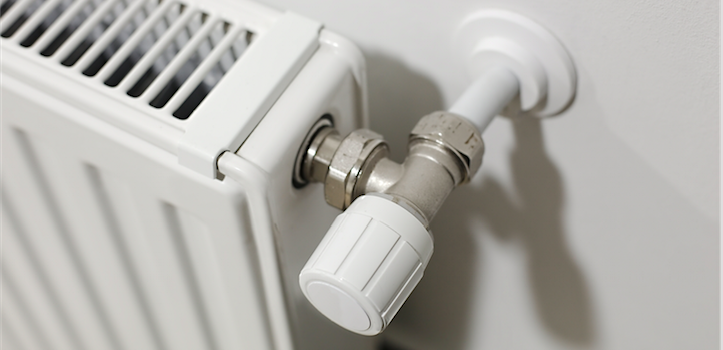

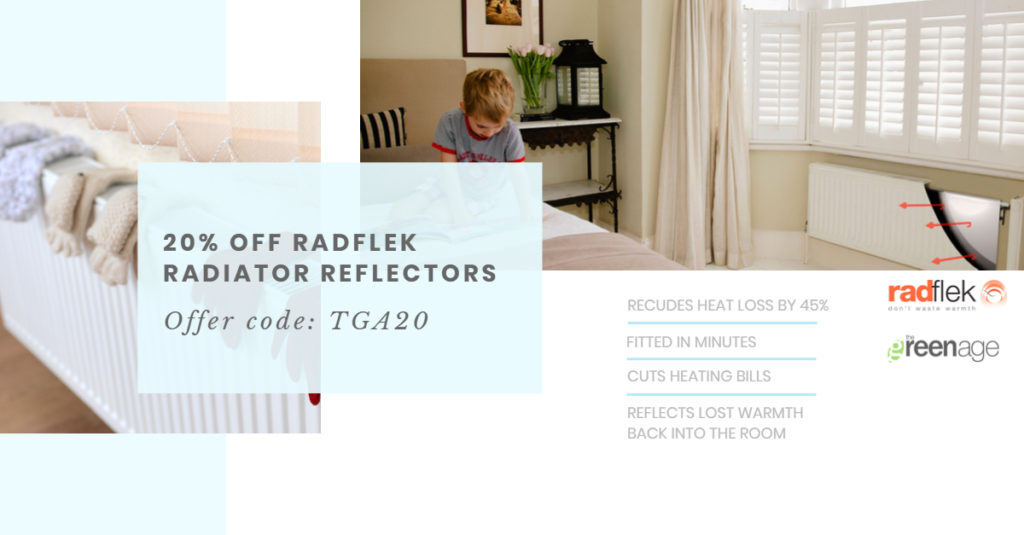




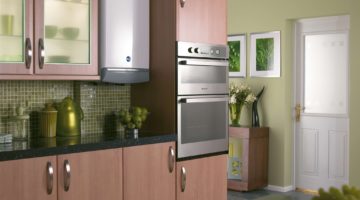
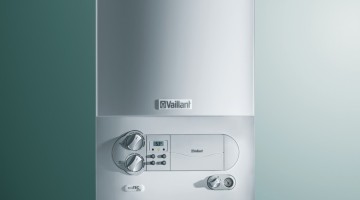






What about the new antique looking radiators, are they efficient? They look much nicer than the newer radaiators in my opinion but I want to make sure they have equal efficiency. Thanks for your help – a useful article
What is the gunk that comes out of a radiator when it is flushed, I assumed the radiators are a closed system?
I can hear a low sound of hissing in my radiator an a smell something not sure if it is gas is this dangerous
There is no gas in the radiators – just water, however from time to time, air bubbles do form which is why you bleed the radiators – to hear a regular hissing does sound a bit strange. Might be worth calling a gas safe plumber around to investigate!
Does it cost me more to run more than one radiator please. Thanks Victoria.
It depends! Radiators get warm because they fill with hot water. If you have more than one radiator, and you want them all on (i.e. hot) they need to have hot water flowing through them. The more hot water you need to create via your boiler, the more gas you will use and therefore the more you will pay on your gas bill. The reason it depends is that one radiator running at 100% would require the same amount of hot water as two radiators running at 50% (if they were the same size). Normally though, the more radiators you have, the more hot water you are going to require.
Hi. I have tried to use a screwdriver to open the valve on the end of my radiators to bleed them, but the screws are too tight! (The old key system was easier!). What can I do??
I just bought a Pontiac Vibe 2005 which was assembled in Fremont, CA, USA to Nigeria. It’s has a single panel radiator and some people are asking me to change it to double panel radiator due to change in climate. Pls, what’s ur professional advise?
Thanks
Hi bashir,
That is a new one on us – I think you need to speak to the manufacturer or a car expert – we only deal with household radiators Im afraid!
Common misconception in this article – it is not air that you are bleeding from the radiators, it is hydrogen – a by product of the constant erosion taking place in the radiator. The reason people think it’s air is because corrosion occurs more quickly in open-vented (i.e. exposed to the air) systems.
The end panel of my radiator is loose. What can I use to secure it back in place?
I want to replace an old double Panal radiator but it is the old imperial size 45″ X 22″.The piping comes through the floorboards and I do not want to change it.Can you still get the same size radiator anywhere..Suggestions would be welcome.Thanks
Hi Mart, give HPS a call – these guys will be able to track one down for you.
Hi, my son has a convector radiator in his bedroom which desperately needs bleeding, however the inner part where you enter the key has broken off so i’m unable to turn to let out air. Does anyone please advise whether it’s still possible or whether the radiator would need new part?
Just loosen the nut at the top with an adjustable wrench let air out tighten it back up
Hi Nicci, you are really going to struggle here if you can’t use a radiator key to be honest – if you can still remove the Radiator Bleed Valve (using pliers or something) it may be difficult to find another to takes its place. Not sure if you get a yearly check on your boiler (which we recommend) but if so, ask the plumber to bring a selection of radiator bleed valves with them – so hopefully they can make the swap and have a ready replacement!
I have 2 radiators in the living room installed by council but both differet in size. It looks awkward what do i do?
In a large room, like a lounge are you better having two smaller/ lower BTU output radiators in different parts of the room or one large/high BTU output radiator? Or does it not make a difference?
Hi Tammy. Two radiators would probably be better to heat the room more evenly, but it won’t cost any more/less in terms of efficiency!
Your comment all radiators have roughly the same efficiency is a myth and wrong vertical radiators take longer to heat and many radiators now sold by internet company’s hold much larger amounts of water than standard panel radiators this means more water to heat and longer heat up times to date the most efficient radiators are qrl panel rads holding less water and faster heat up times I have 40 yrs in heating industry and the majority of tall designer rads are tested tboe connections to get output data but fitted boe in households to prevent unsightly pipework to top of radiator I fitted four designer column radiators in my home and removed them first winter due there heat up time and efficiency once replaced by standard panel rads heat up time lowered by 30 mins to obtain room temp and boiler went into max efficiency 1 hr earlier UE to lower water content.
I think you are missing the point about efficiency. Radiators are passive devices, you put hot water in and they radiate warmth out.
Radiators don’t produce heat nor do they absorb heat themselves, they just radiate whats there. Some radiate more warmth out than others, either because of its design or surface area or both. You don’t get more heat for free. Whatever heat is radiated out to the room has to be replaced by the boiler, so if a radiator has a 20 degree difference between its input and output then the boiler has to replace that heat by heating that water back up 20 degrees. If the input and output difference was 40 degrees, then the radiator would be radiating more heat to the room, but consequently the boiler would have to heat that water back up 40 degrees. There isnt a free lunch. So a more efficient radiator really just radiates more heat quicker than a less efficient radiator so the room heats up faster BUT the boiler works harder for a shorter time. The real trick is to size the radiators and tune them so that they run at maximum efficiency which can be measured by the difference in input and output temperatures so as to keep the boiler running at its most efficient as well. If you have a radiator with a much larger volume than another then yes its true it will take longer to heat that volume of water, but also a larger volume of water takes much longer to cool down so that radiator once hot will radiate heat for a longer period when the heating is turned off. The heat isn’t wasted it is all used up eventually.
Hi I was pondering this, sounds like you know the answer. There are lots of nice looking ‘designer’ radiators on the market and column old style radiators are very on trend at the minute but sounds like they are to be avoided. Style over substance! or at least style over heating efficiency?
Thanks for the “Sizing your radiator” formula. It’s hard to find information about the old “flat panel”/type 10 or 20 rads, now. The one thing you don’t explicitly say, though it is implied, is what units the length of the rad is. Answer = cm!
what type of radiator makes the less marks on the wall above radiator? Have convector
type at present causing marks on wall above radiator. Walls are papered and do not want
to repaper. Any comments appreciated.
Hello, will placing a sofa in front of an electric wall mounted connector heater stop it from working?